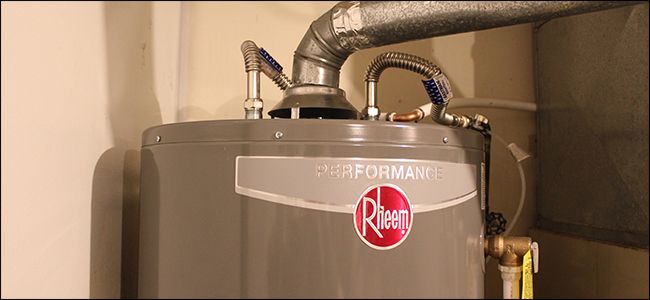Ensuring Longevity of Your Home's Hot Water System: Maintenance Tips
Ensuring Longevity of Your Home's Hot Water System: Maintenance Tips
Blog Article
The author is making a number of good points regarding Water Heater Maintenance Tips You Can't Afford to Forget overall in this great article below.

Warm water is important for daily convenience, whether it's for a rejuvenating shower or cleaning meals. To ensure your hot water system runs successfully and lasts much longer, routine maintenance is key. This post offers sensible pointers and understandings on how to preserve your home's hot water system to prevent disruptions and pricey repair work.
Introduction
Keeping your home's hot water system might seem daunting, yet with a couple of basic actions, you can ensure it runs smoothly for several years to find. This overview covers every little thing from understanding your warm water system to DIY upkeep pointers and understanding when to contact professional assistance.
Relevance of Preserving Your Warm Water System
Routine upkeep not just prolongs the life expectancy of your warm water system however additionally ensures it operates effectively. Ignoring upkeep can bring about reduced effectiveness, greater energy costs, and even early failing of the system.
Indicators Your Hot Water System Requirements Upkeep
Knowing when your hot water system requires focus can avoid significant issues. Watch out for indicators such as inconsistent water temperature, odd sounds from the heating system, or rusty water.
Comprehending Your Warm Water System
Prior to diving into maintenance tasks, it's practical to comprehend the standard parts of your hot water system. Usually, this consists of the water heater itself, pipes, anode poles, and temperature controls.
Monthly Maintenance Tasks
Normal monthly checks can help catch minor concerns prior to they escalate.
Flushing the Hot Water Heater
Purging your hot water heater eliminates debris accumulation, enhancing performance and prolonging its life.
Checking and Changing Anode Rods
Anode rods stop corrosion inside the storage tank. Evaluating and changing them when worn out is important.
Evaluating and Changing Temperature Level Settings
Adjusting the temperature level setups makes certain optimal performance and safety and security.
DIY Tips for Upkeep
You can do numerous upkeep jobs on your own to maintain your warm water system in top condition.
Looking for Leakages
Regularly inspect pipes and connections for leakages, as these can result in water damages and greater expenses.
Evaluating Stress Relief Valves
Evaluating the stress safety valve guarantees it functions correctly and prevents too much stress accumulation.
Insulating Pipes
Shielding warm water pipes reduces warmth loss and can conserve power.
When to Call a Specialist
While DIY maintenance is advantageous, some issues require professional experience.
Complicated Concerns Requiring Specialist Help
Instances include major leakages, electric issues, or if your water heater is consistently underperforming.
Regular Expert Upkeep Perks
Professional upkeep can include comprehensive inspections, tune-ups, and making certain compliance with safety requirements.
Verdict
Routine maintenance of your home's warm water system is vital for efficiency, durability, and cost financial savings. By following these pointers and knowing when to look for expert aid, you can guarantee a reliable supply of hot water without unanticipated disruptions.
How to Maintain an Instant Hot Water Heater
Before tinkering with your hot water heater, make sure that it’s not powered on. You also have to turn off the main circuit breaker and shut off the main gas line to prevent accidents. Also turn off the water valves connected to your unit to prevent water from flowing into and out of the appliance. 2. When you’re done, you have to detach the purge valves’ caps. These look like the letter “T†and are situated on either side of the water valves. Doing so will release any pressure that has accumulated inside the valves while at the same time avoid hot water from shooting out and burning your skin. 3. When the purge valves’ caps are removed, you have to connect your hosing lines to the valves. Your unit should have come with three hoses but if it didn’t, you can purchase these things from any hardware or home repair shops. You can also get them from retail stores that sell water heating systems. Read the user’s manual and follow it to complete this task properly. When the hosing lines are connected, open the purge port’s valves. 4. You should never use harsh chemical cleaners or solutions when cleaning your unit. Make use of white vinegar instead. It should be undiluted and you’ll probably use about 2 gallons. 5. Now flush your water heater. This task should probably take about 40 minutes. We can’t give you specific directions for this because the procedure is carried out depending on the type, model and brand of your heater. With that being said, refer to the user’s manual. 6. When you’re done draining the unit, you have to turn off the purge port valves again. Remove the hosing lines that you earlier installed on each of the water valves. Put the valve caps (purge port) back in their respective places and be very careful so as not to damage the rubber discs that are found inside these caps. 7. Now that everything’s back in place, check your user’s manual again to find out how to reactivate your water heating system. 8. Once it is working, turn one of your hot water faucets on just to let air pass through the heater’s water supply pipes. Leave the tap on until water flows smoothly out of it. https://www.orrplumbing.com/blog/2014/september/how-to-maintain-an-instant-hot-water-heater/

We are very excited about Water Heater Maintenance Tips You Can't Afford to Forget and I am assuming you enjoyed our article. Appreciated our article? Please quickly share it. Let another person find it. I appreciate reading our article about Water Heater Maintenance Tips You Can't Afford to Forget.
Click Here! Report this page